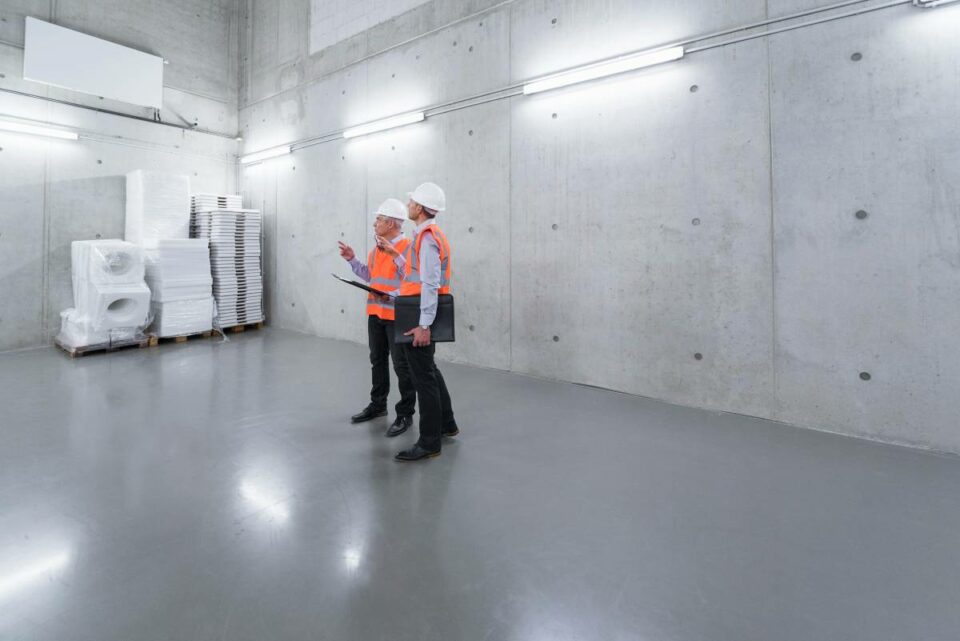If you’re a business owner, then you know that finding a suitable space for your company is essential. It would be best if you had a place that’s big enough to accommodate your needs but not so large that you’re spending too much on rent.
That’s where build to suit development comes in. This type of real estate development allows businesses to lease or purchase property without worrying about designing and constructing a building from scratch. In this blog post, we’ll discuss the pros and cons of build to suit development so that you can decide if it’s the right option for your company!
With build to suit development, you can achieve “facility optimization,” which means getting the most out of an organization’s resources. This means that the building is made to fit the needs of the tenant, which can lead to higher productivity and lower operating costs.
What exactly is built to suit development?
![What is Build to Suit Development? [The Pros and Cons] Build to Suit Development](https://toljcommercial.com/wp-content/uploads/Build-to-Suit-Development-2.jpg)
In the build to suit arrangement, a tenant leases or purchases land from a developer and then works with that developer to construct a building that meets their specific needs. This type of development is often used by businesses that require special features in their establishments, such as restaurants or retail stores.
Build to suit arrangements can be divided into two types:
Sale-Leaseback
In a sale-leaseback, the tenant sells their existing property to the developer. The developer then builds a new facility for the tenant and leases it back to them.
Developer Led
In a developer-led build to suit, the developer owns the land and constructs the building for the tenant. The tenant then leases the property from the developer.
What are the Pros of build to suit development?
There are several pros to build to suit development, including:
Increased flexibility
With build to suit development, businesses have the opportunity to customize their buildings to meet their specific needs. This increased flexibility can lead to increased productivity and decreased operating costs.
Tailored For Your Needs
In a build to suit development, the building will be designed for the way your business operates.
This means that you can specify everything from the location of the kitchen to the layout of your office cubicles. You’ll also have the opportunity to choose which features are included in the building’s design and construction.
You’ll have the option of selecting a variety of floor plans and layouts for offices, conference rooms and meeting spaces. And if there are any special requests for equipment or technology needs, you can take care of those too.
This is an excellent option for businesses that want to create a unique environment for their employees, customers and vendors.
Access to capital
Developing property can be an expensive undertaking. By working with a developer on a build-to-suit project, businesses can access the capital they need to finance their development without taking out a loan.
What are the Cons of build to suit development?
There are some potential cons to build to suit development, including:
Increased costs
Because businesses have the opportunity to customize their buildings, build-to-suit development can be more expensive than leasing or purchasing an existing building.
Longer timelines
Build to suit developments can take longer to complete than leasing or purchasing an existing building. This can be a problem for businesses that need to move into their new space quickly.
Limited options
When you work with a developer on a build to suit project, you may have limited options when it comes to the location of your new building. This can be a problem if you’re looking for a specific type of property.
Overall, build to suit development can be a great option for businesses that need to customize their buildings to meet their specific needs. However, it’s important to weigh the pros and cons of this type of development before making a decision.
Build to Suit Development: How Does the Design and Build Process Work?
The design and build process for a build to suit arrangement is similar to the process for any other type of real estate development. Businesses will work with the developer to select a site, design the building, obtain the necessary permits, and construct the new building.
However, because businesses have the opportunity to customize their buildings, they’ll also have input into the design of the building. This can include things like the layout, finishes, and fixtures. Businesses will also work with the developer to select a contractor and other professionals who will be involved in the development process.
The timeline for a build to suit development can vary depending on the size and complexity of the project. However, it’s important to keep in mind that this type of development can take longer to complete than leasing or purchasing an existing building. This is something that businesses should consider when deciding whether or not to pursue a build to suit development.
Build to suit: Is it right for my company?
At the same time that demand for particular goods has grown in many sectors, construction costs have risen owing to shipping delays and material shortages.
As a result, these prices are being passed on to the consumer—renters experience this as higher rental rates and fewer quality rental options in markets that were already feeling upward pressure.
This combination of things is making it hard for markets to work properly; Development is slowing down while tenants are getting more desperate.
When considering if a build to suit is right for your company, you must first look at the needs of your business. If you require a very specific type of commercial property that is difficult to find on the market, then a build to suit may be the best option. This is especially true if time is not on your side, as these developments can take longer to complete than simply leasing or purchasing an existing building.
Overall, build to suit development can be a great option for businesses that need to customize their buildings. However, it’s important to weigh the pros and cons of this type of development before making a decision. businesses should also be aware of the potential for increased costs and longer timelines associated with this type of development.
![What is Build to Suit Development? [The Pros and Cons] Build to Suit Development](https://toljcommercial.com/wp-content/uploads/Build-to-Suit-Development-3.jpg)
Are there any other things I need to know about build to suit?
Here are some other things to know about build to suit:
You have to be involved with the design
You have to oversee the process from beginning to end. This can be a pro or a con depending on how you feel about being involved in every single decision. But it’s important to remember that this is the building we’re talking about! You should have a say in everything from the layout to the finishes.
Additionally, you may expect to spend a lot of time talking to the designers and answering a lot of their queries. They’ll try to get inside your skull, so to speak. If you want your firm to run as smoothly and efficiently as possible, you’ll need to make sure they understand how it works.
Be prepared to sign a lengthier lease.
For the project to be financially viable, the developer will need a long-term commercial tenant. It lessens their exposure to danger and provides them with a reliable source of income. Expect the developer to ask for a long-term lease, often at least a decade.
Most build to suit leases are referred to as “triple net leases,” which is an important distinction to be aware of. Repairs, taxation, and insurance must be covered by the tenant.
How is the rent computed?
The rent for a build to suit development is usually calculated using a “net lease.” That means the base rent is determined without including the costs of taxes, insurance, or maintenance costs & repairs. In most lease agreements, these additional costs are passed along to the tenant.
While this may seem like an unfair way to calculate rent, it’s quite common in the commercial space real estate world. When you think about it, it makes sense: the developer wants to recoup their investment, so they need to make sure the base rent is high enough to cover all of their costs.
Is build to suit the right choice for my business?
If your company is considering build to suit, here are a few things to keep in mind:
When do I want to move into my new space?
If you’re looking to move in the next few months, then building to suit probably isn’t going to be an option. It can take anywhere from 12 to 18 months for a build to suit project to be completed.
Does a new building require a specific amount of money up front?
If you want to minimize the amount of money you spend upfront, then build to suit may not be right for you. With build to suit, you’ll likely have to pay for land acquisition, design fees, and construction costs all at once.
Do I want to settle in one place for a long time?
If you’re not sure that you want to be in the same location long-term, then build to suit may not be right for you. When you build to suit, you’ll probably sign a long rental contract with the developer.
Can I take care of all of this on my own?
A build to suit may be the best option if you lack the time and expertise to handle all this on your own. A professional development team will handle the project, which will result in the building you desire.
Conclusion
So, what is build to suit development? It’s a process in which the developer and business work together to create a space that meets both of their needs. The pros are pretty clear—it can be more efficient, and tailored to your specific business. However, there are some cons to consider before deciding if this type of development is right for you.
If you think build to suit might be the right fit for your business, please call or schedule a free consultation with me today. I would love to help you make the most informed decision possible!




